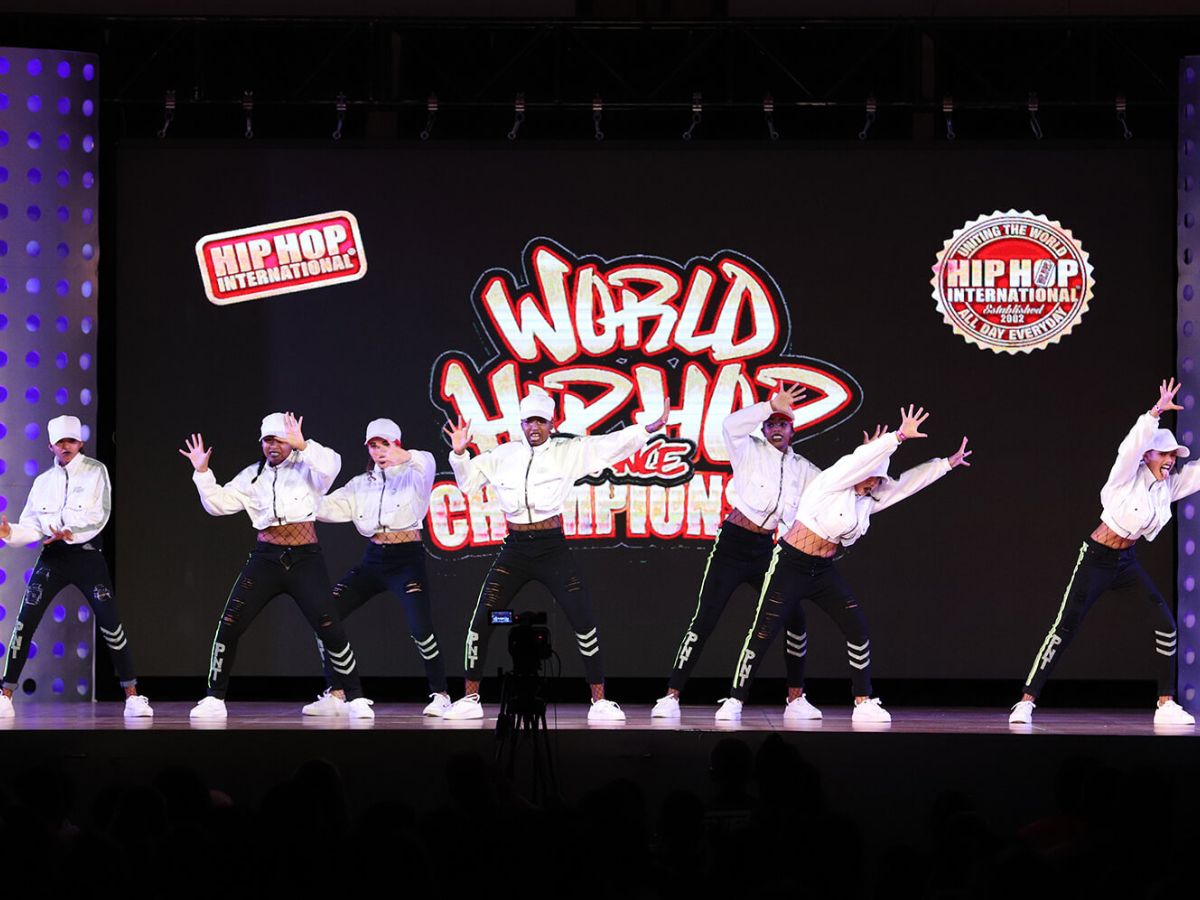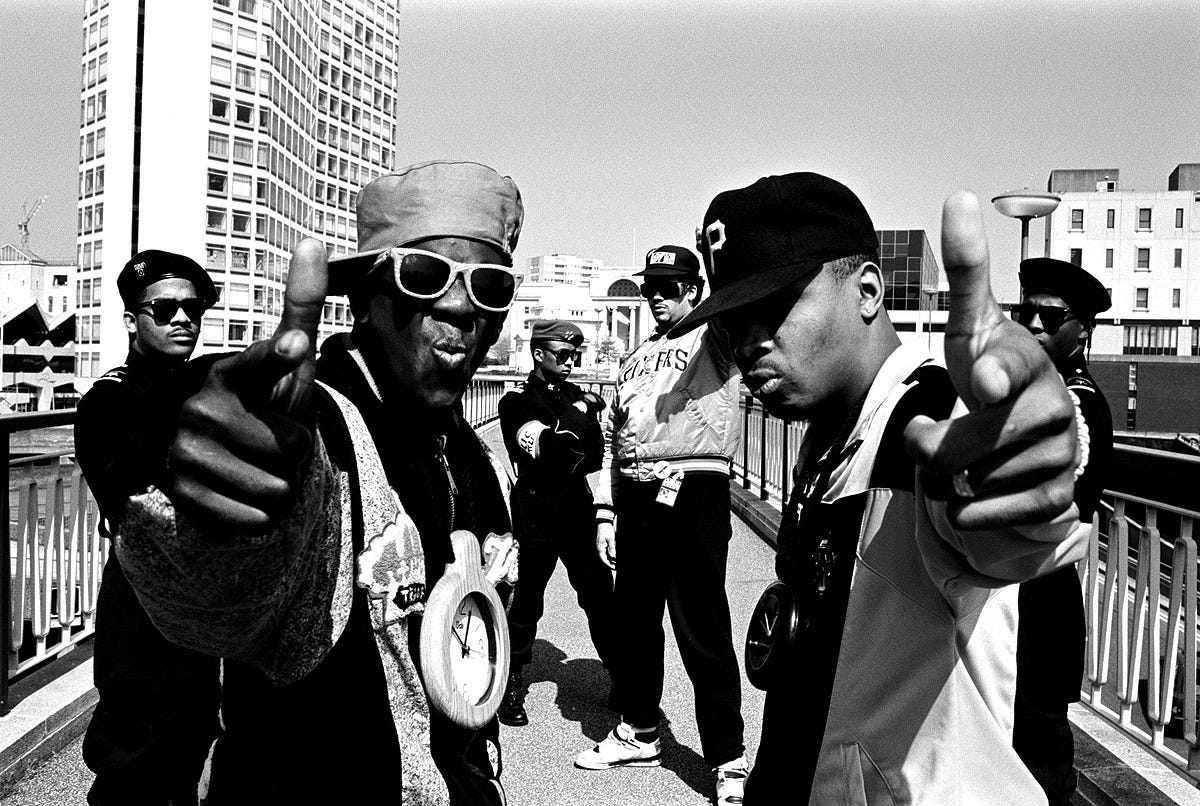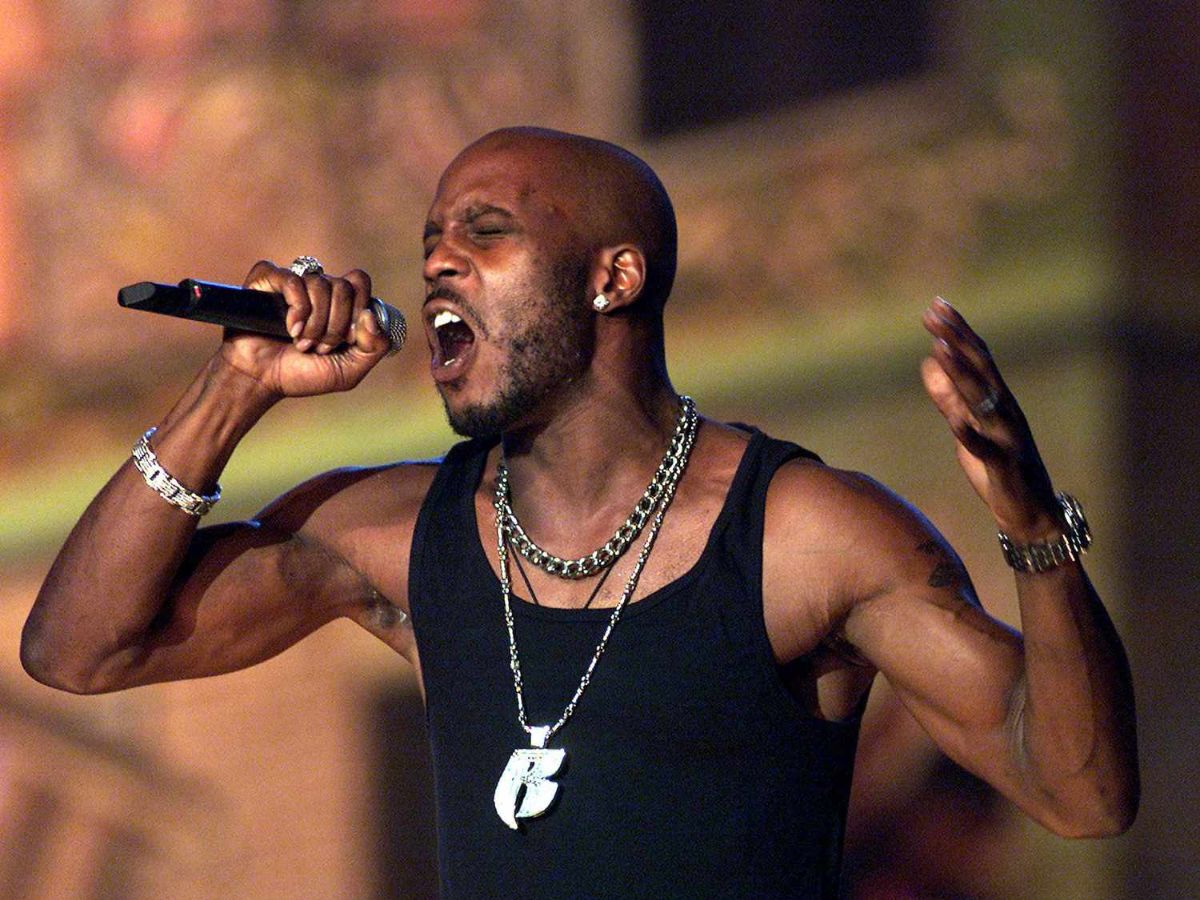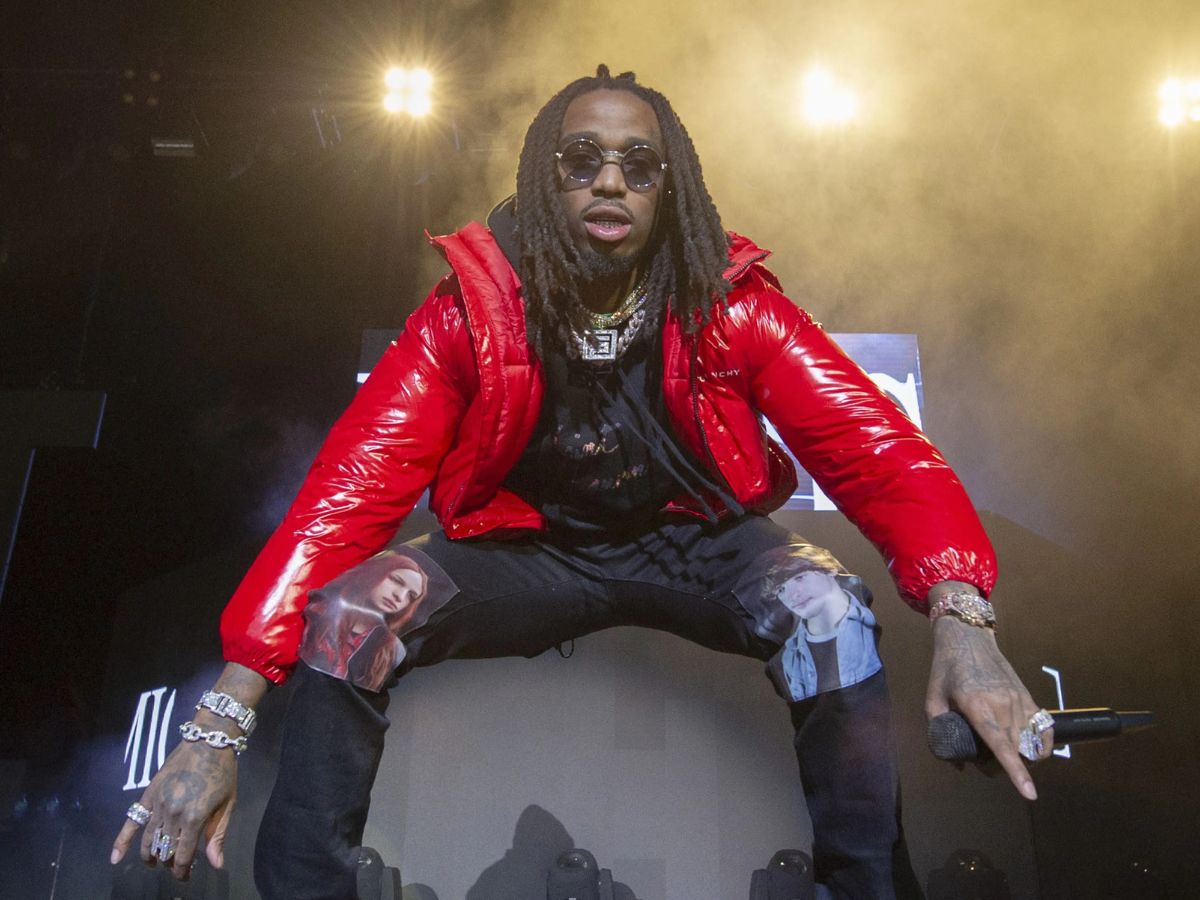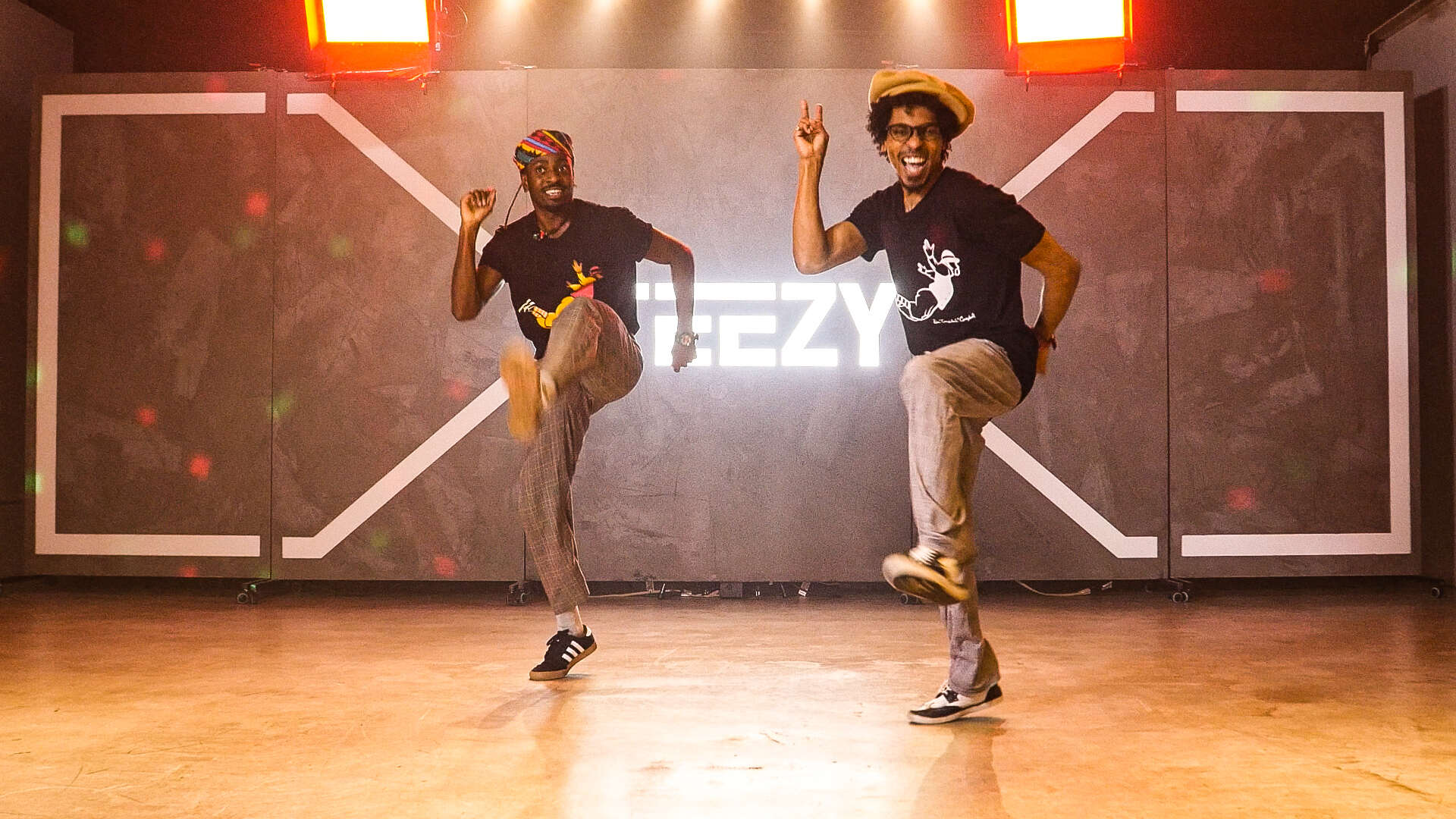

Hip Hop
What Is Locking In Hip Hop
Modified: January 22, 2024
Discover the concept of locking in hip hop, an iconic dance style characterized by rhythmic movements and precise pops. Dive into the world of hip hop dance with this insightful guide.
(Many of the links in this article redirect to a specific reviewed product. Your purchase of these products through affiliate links helps to generate commission for AudioLover.com, at no extra cost. Learn more)
Table of Contents
Introduction
Hip Hop is a cultural movement that emerged in the 1970s in the Bronx, New York City. It encompasses various elements, including rap music, DJing, graffiti art, and breakdancing. Another crucial aspect of Hip Hop is locking, a dance style characterized by its energetic and rhythmic movements.
Locking is a form of street dance that originated in the late 1960s and early 1970s. It was developed by Don Campbell, better known as Don “Campbellock,” who introduced the dance style as a part of his performance group, The Lockers. Locking is known for its distinctive movements, including exaggerated arm and hand gestures, quick footwork, and tight body isolations. These movements are often performed with a sense of rhythm and musicality, making locking a captivating and entertaining dance style.
Over the years, locking has become an integral part of Hip Hop culture. It has influenced and been incorporated in various forms of dance, music videos, and live performances. Locking has also evolved and adapted, giving rise to new moves, techniques, and styles within the Hip Hop community.
In this article, we will explore the history of locking in Hip Hop, delve into the key moves and techniques, discuss famous locking artists, and examine the differences between locking and popping. We will also explore the cultural significance of locking and its evolution in contemporary Hip Hop. So, get ready to dive into the world of locking and discover the rhythm and creativity that defines this unique dance form.
What is Locking?
Locking is a dynamic and expressive street dance style that originated in the 1960s and gained popularity in the 1970s as part of the Hip Hop movement. It is characterized by its distinctive movements, including “locks” and “points,” which are done in sync with the music’s rhythm.
The term “locking” refers to the act of freezing or “locking” a particular dance move, holding it momentarily before transitioning into the next step. These locks are accentuated through sharp and exaggerated arm, hand, and leg movements, creating a visually captivating and rhythmic dance style.
One of the defining characteristics of locking is its emphasis on musicality. Locking dancers have a keen sense of rhythm and timing, allowing them to synchronize their movements with the beat and accents of the music. This musicality adds a layer of creativity and improvisation to the dance, as dancers interpret and respond to the music in their own unique way.
Another key aspect of locking is the use of facial expressions and larger-than-life gestures. Locking dancers are often known for their charismatic and joyful performances, as they use their entire body to engage with the audience and convey emotions. This vibrant and expressive style sets locking apart from other dance forms and contributes to its popularity and appeal.
Locking can be performed individually as well as in groups, allowing for solo showcases and synchronized routines. The dance style encourages freestyle improvisation, where dancers can incorporate their own personal flair, moves, and interactions with other dancers. This aspect of creativity and individuality is what makes locking a unique and ever-evolving dance form.
Locking has also become a respected competitive dance style, with locking battles and competitions held worldwide. These events showcase the skill, creativity, and showmanship of locking dancers, as they engage in friendly competition and push the boundaries of the dance form.
Overall, locking is a high-energy, rhythmic, and expressive dance style that continues to evolve and thrive within the Hip Hop community. Its unique movements, musicality, and emphasis on joy and charisma make locking a captivating and influential art form in the world of dance.
History of Locking in Hip Hop
The history of locking in Hip Hop can be traced back to the late 1960s and early 1970s in Los Angeles, California. It was created by Don Campbell, famously known as Don “Campbellock,” along with his dance group, The Lockers.
During this time, locking was primarily performed at parties, clubs, and street dance battles. It quickly gained popularity for its showmanship, energetic movements, and connection with the music. Locking was not only a form of self-expression but also a means of entertainment and storytelling through dance.
Don Campbell, known for his signature moves such as the “Campbellock,” “Lock,” and “Pimp Walk,” choreographed routines that incorporated elements of soul, funk, and disco. He developed locking by combining moves from various dance styles, including tap, James Brown-inspired footwork, and martial arts influences.
The Lockers, Don Campbell’s performance group, played a crucial role in popularizing locking. With their vibrant stage presence and dynamic routines, they became an integral part of the entertainment industry. They performed on television shows, music videos, and live performances alongside well-known artists such as Frank Sinatra, Chaka Khan, and The Jackson 5.
Throughout the 1970s and 1980s, locking continued to evolve and spread across the United States and internationally. Dancers from different cities, such as Los Angeles, Oakland, and New York, added their own unique styles and variations to locking, leading to a diversification of the dance form.
In the 1980s, locking faced a decline in popularity due to changing trends and the emergence of other street dance styles. However, it experienced a resurgence in the 1990s with the revival of Hip Hop culture and the growing interest in old-school dance styles.
Today, locking remains an integral part of Hip Hop culture and is taught and performed in dance schools, studios, and urban dance communities worldwide. It has inspired countless dancers, choreographers, and artists, contributing to the evolution and innovation of dance within the Hip Hop genre.
The legacy of Don “Campbellock” Campbell and The Lockers continues to inspire new generations of locking dancers, who carry forward the techniques, spirit, and vibrancy of this iconic dance style.
Locking Moves and Techniques
Locking is characterized by its unique and stylish moves that contribute to the dance form’s energetic and rhythmic nature. Here are some of the key moves and techniques commonly seen in locking:
- Locks and Points: Locking is defined by the “locks” – freezing a pose or movement – and “points” – extending the fingers and arms to emphasize accents in the music. These sharp and exaggerated movements are the foundation of locking and create visual impact.
- Wrist Rolls: Wrist rolls are an essential element of locking, where the wrists are rotated in a rolling motion. This move can be done in various directions and speeds, adding fluidity and sophistication to the dance.
- Knee Drops: Knee drops involve rapidly bending and extending the knees, creating a quick and explosive movement. This move is often used as a transition or to punctuate a specific beat or musical accent.
- Funky Chicken: The funky chicken is a playful move that imitates the movement of a chicken. It involves quick arm swings, shoulder shrugs, and bobbing motions, showcasing the dancer’s freedom and sense of humor.
- Peg Leg: In the peg leg move, the dancer lifts one leg and holds it in a flexed position while performing the locking steps with the other leg. This move adds variety and balance to the dance, showcasing control and coordination.
- Scarecrow: The scarecrow is a dramatic and eye-catching move where the dancer extends their arms out to the sides, making a “T” shape, and freezes in that pose. This move allows for emphasis on musical accents and adds a theatrical element to the performance.
- Puppet: The puppet move involves isolating different body parts, such as the arms, legs, or torso, and moving them in a controlled and robotic manner. This technique showcases the dancer’s body control and adds a mechanical element to their movements.
These are just a few examples of the countless moves and techniques that can be found in locking. Dancers often combine these foundational moves with their own creativity and personal style, making each performance unique and captivating. The versatility and adaptability of locking allow for continuous innovation and the development of new moves and techniques within the dance form.
Famous Locking Artists
Locking has produced many talented and influential dancers who have made significant contributions to the Hip Hop and dance communities. Here are some of the most famous locking artists who have left a lasting impact:
- Don “Campbellock” Campbell: As the creator of locking, Don Campbell played a vital role in shaping the dance style. His charismatic performances and signature moves made him a legendary figure in the locking community. Campbell’s innovative choreography and passion for dance paved the way for future generations of locking artists.
- Greg “Campbell Jr.” Pope: Known as the “Prince of Locking,” Greg Pope is Don Campbell’s son and a prominent figure in the locking scene. He has played a crucial role in preserving and promoting the art of locking through his performances, workshops, and appearances in various dance projects.
- Adolfo “Shabba-Doo” Quiñones: Shabba-Doo was a founding member of The Lockers and one of the pioneers of locking. He gained international recognition through his role in the movie “Breakin'” and its sequel, where he showcased his locking skills on the big screen.
- Locker Joe “Skeeter Rabbit” Wiggins: Skeeter Rabbit was known for his smooth and fluid locking style. He was a member of The Lockers and contributed to the growth and popularity of locking during its early years. His performances alongside the group and individual showcases continue to inspire locking dancers worldwide.
- Tom “Tommy the Clown” Johnson: While known primarily as a clown dancer, Tommy the Clown has also incorporated locking into his performances. His fusion of locking with other dance styles, such as clowning and krumping, helped bring locking to a new audience and contributed to its ongoing evolution.
- Anna “Annie Lock” Sanchez: Annie Lock is a well-respected locking artist known for her incredible skill and musicality. Her dynamic performances and dedication to spreading the love of locking have made her a beloved figure in the locking community.
These locking artists have not only elevated the dance form through their skill and creativity but have also played significant roles in preserving and advancing the culture and history of locking. Their contributions have inspired dancers around the world and continue to influence the development and growth of locking as a vibrant and respected dance style.
Locking vs. Popping: What’s the Difference?
Locking and popping are two distinct dance styles that emerged as part of the Hip Hop movement. While they share some similarities, there are fundamental differences that set them apart. Let’s explore the key characteristics that differentiate locking from popping:
Origins: Locking originated in the late 1960s and early 1970s in Los Angeles, California, with Don Campbell being credited as its creator. Popping, on the other hand, originated in the 1970s in Fresno, California, and was popularized by pioneers such as Boogaloo Sam and Popin’ Pete.
Technique: Locking is characterized by its distinctive “locks” and “points,” where movements are frozen momentarily and accentuated with sharp and exaggerated gestures. It emphasizes rhythmic movements driven by the music’s beat and emphasizes musicality and expression. Popping, on the other hand, focuses on the contraction and relaxation of muscles, creating a popping or hitting effect. It involves isolations, animation, robotic movements, and intricate body control.
Style and Execution: Locking is known for its vibrant and energetic style, with dancers often exhibiting joy, charisma, and showmanship. The movements are often big and expressive, engaging the entire body. Popping, on the other hand, has a more intricate and precise style, with dancers showcasing control over individual muscle groups and executing fast and precise movements with a sense of illusion and robotic precision.
Musicality: Both locking and popping are closely tied to the music they are performed to, but they interpret the music in different ways. Locking emphasizes rhythmic movements and works in synchronization with the musical accents and beats. Popping, on the other hand, uses the music’s rhythms and nuances to inspire different popping and hitting techniques, often creating a visual representation of the music through movement.
Cultural Influence: Locking and popping have both had a significant impact on Hip Hop culture and the dance community. Locking’s influence can be seen in music videos, live performances, and street dances. Popping, with its visually striking style, has also made a mark in the entertainment industry, with appearances in movies, commercials, and performances by renowned artists.
While locking and popping are distinctive in their techniques and execution, they are often seen complementing each other and are frequently performed together in dance routines and battles. Many dancers choose to master both styles, combining their elements to create a unique and versatile dance vocabulary.
Ultimately, the differences between locking and popping lie in their movements, style, and musical interpretation. Both dance styles contribute to the rich tapestry of Hip Hop and continue to inspire dancers and enthusiasts around the world.
Locking as a Cultural Phenomenon
Locking is not just a dance style; it is a cultural phenomenon that has transcended the boundaries of the dance community and made a significant impact on popular culture. Here’s why locking holds such cultural significance:
Expression of Hip Hop Culture: Locking originated within the broader Hip Hop movement, which encompasses various artistic elements like music, graffiti, and dance. Locking, with its energetic and rhythmic movements, embodies the spirit of Hip Hop and serves as a means of self-expression and storytelling.
Connection to African and African-American Dance Traditions: Locking draws inspiration from African and African-American dance traditions, incorporating elements of soul, funk, and disco. By incorporating these influences, locking pays homage to the rich cultural heritage and history of the African diaspora.
Community Building and Identity: Locking has created a sense of community and camaraderie among dancers and enthusiasts. It has fostered connections between people from diverse backgrounds, allowing them to connect through their shared love for the dance form. Locking also contributes to the development of individual and group identities within the Hip Hop community.
Creative Innovation and Individuality: Locking encourages freestyle improvisation, personal flair, and creativity. It allows dancers to develop their own unique style and add their personal touch to the dance form. This emphasis on creativity and individuality has fueled the ongoing innovation and evolution of locking.
Positive Impact on Health and Well-being: Locking is not only a form of artistic expression but also a physical activity with numerous health benefits. It improves cardiovascular fitness, coordination, and flexibility. Additionally, the sheer joy and positive energy associated with locking contribute to mental well-being and stress relief.
Influence on Pop Culture: Locking has had a profound influence on popular culture, appearing in music videos, commercials, movies, and live performances by renowned artists. Its vibrant and visually captivating style has captivated audiences and helped spread the popularity of locking beyond the dance community.
Overall, locking’s cultural significance lies in its representation of Hip Hop culture, its connection to African and African-American dance traditions, its community-building capabilities, and its positive impact on health and well-being. This dance style embodies creativity, individuality, and self-expression, leaving an indelible mark on the cultural landscape of society.
Evolution of Locking in Contemporary Hip Hop
Locking has undergone a significant evolution within the contemporary Hip Hop scene, adapting and evolving to reflect the changing times and incorporating influences from various dance styles and cultural movements. Here are some key aspects that highlight the evolution of locking in contemporary Hip Hop:
Fusion with Other Dance Styles: In recent years, locking has increasingly embraced fusion with other dance styles. Dancers have incorporated elements of hip hop, street dance, house dance, waacking, and various cultural dance forms into their locking repertoire. This fusion has expanded the possibilities of movement and allowed for greater creativity and self-expression.
Influence of Social Media and Online Communities: The rise of social media platforms and online dance communities has provided a global platform for locking enthusiasts to share their skills, connect with other dancers, and learn from a diverse range of influences. This accessibility has accelerated the spread of locking knowledge, fostering a rich and dynamic exchange of ideas and techniques.
Emphasis on Technique and Skill Development: Contemporary locking has seen a greater focus on technique and skill development. Dancers engage in rigorous training and attend workshops and intensives to refine their locking abilities. This dedication to technical precision has elevated the overall standard of locking performance and pushed dancers to constantly challenge themselves creatively.
Incorporation of Improvisation and Freestyle: While technique is important, contemporary locking continues to embrace the element of improvisation and freestyle. Dancers incorporate their personal flair and style, allowing for spontaneous and unique performances. This balance between technique and freestyle adds an element of spontaneity and authenticity to locking routines.
Cross-Cultural Exchange: Locking has become a global phenomenon, with dancers from different countries and cultural backgrounds contributing to its growth and evolution. International festivals, competitions, and collaborations have fostered cross-cultural exchange, allowing for the sharing of diverse perspectives, movement vocabularies, and artistic influences.
Artistic Innovation and Choreography: Choreographers and locking artists continue to push the boundaries of what is possible within the dance form by exploring new movement patterns, concepts, and storytelling techniques. This artistic innovation has led to the creation of captivating locking performances that showcase the versatility and depth of the dance style.
Overall, contemporary locking in Hip Hop is characterized by its fusion with other dance styles, the influence of social media and online communities, a focus on technique and skill development, an emphasis on improvisation and freestyle, cross-cultural exchange, and continued artistic innovation. These factors have contributed to the ongoing evolution and dynamism of locking as a vibrant element of the Hip Hop culture.
Locking in Popular Culture
Locking, with its visually captivating movements and vibrant energy, has made a significant impact on popular culture. The dance form’s influence can be seen across various forms of media, performances, and entertainment. Here are some key examples of locking’s presence in popular culture:
Music Videos: Locking has been prominently featured in numerous music videos, adding a dynamic and visually appealing element to the performances. Artists like Bruno Mars, Beyoncé, and Justin Timberlake have incorporated locking movements into their choreography, showcasing the dance form’s ability to enhance and elevate music videos.
Live Performances: Locking has become a staple in live performances by renowned artists. Dancers often showcase their locking skills alongside musicians, adding an extra layer of excitement and entertainment value. Whether it’s a concert, award show, or halftime show, locking performances leave a lasting impression on audiences.
Films and Television: Locking has been featured in various films and television shows, often as a representation of urban street culture and dance. Movies like “Breakin'” and “Step Up” series have brought locking to the forefront, introducing the dance form to a wider audience. Reality dance competitions like “So You Think You Can Dance” have also given locking artists a platform to showcase their skills and compete.
Commercial Advertisements: Advertisers recognize the appeal and attention-grabbing nature of locking. The energetic and charismatic performances of locking dancers have been featured in commercials for major brands, adding a sense of excitement and creativity to their campaigns.
Dance Shows and Competitions: Dance shows and competitions play a significant role in showcasing locking talent and driving the dance form’s popularity. Locking battles and competitions such as Juste Debout and World Hip Hop Dance Championship feature top locking artists from around the world, allowing them to display their skills and compete for recognition.
Social Media and Viral Videos: Locking’s presence on social media platforms has exploded in recent years. Dancers often share their locking performances, challenges, and tutorials, gaining viral attention and inspiring others to embrace the dance form. Social media platforms have become a vital tool for locking artists to showcase their talent and connect with like-minded individuals worldwide.
Street Performances and Flash Mobs: Locking also thrives in street performances, flash mobs, and public spaces. Dancers take to the streets, parks, and squares, captivating passersby with their infectious energy and skill. These impromptu showcases bring locking into the public eye and engage communities directly.
Overall, locking’s presence in popular culture is widespread, with its influence extending to music videos, live performances, films, television, advertisements, dance shows, social media, and street performances. This visibility not only exposes the wider public to the artistry of locking but also inspires new generations of dancers to take up the dance form, ensuring its continued growth and relevance in popular culture.
Conclusion
Locking has emerged as a vibrant and influential dance style within the Hip Hop movement. With its energetic movements, distinctive locks, and rhythmic execution, locking has captivated audiences and made its mark on popular culture around the world.
From its origins in the 1960s with Don “Campbellock” Campbell and The Lockers to its evolution in contemporary Hip Hop, locking has proven to be a dynamic and ever-evolving dance form. It has been able to fuse with other styles, incorporate new influences, and adapt to the changing times while still maintaining its cultural roots.
Locking is not only a dance style but a cultural phenomenon. It serves as a platform for self-expression, community building, and identity formation within the Hip Hop community. Its influence reaches beyond the dance floor, as locking has become a part of popular culture through music videos, films, television shows, commercials, and live performances by celebrated artists.
The evolution of locking has been fueled by the dedication and creativity of locking artists who continue to push the boundaries of the dance form. Through fusion with other styles, emphasis on technique and skill development, and the incorporation of improvisation and freestyle, locking remains a dynamic and constantly evolving dance style within the contemporary Hip Hop scene.
Locking’s cultural significance is further reinforced by its connection to African and African-American dance traditions, its positive impact on health and well-being, and its ability to bring people together through its infectious energy and creativity. It has become a symbol of joy, self-expression, and artistic innovation.
Looking ahead, locking is poised to continue leaving its mark on popular culture, inspiring new generations of dancers, and serving as a powerful vehicle for self-expression and cultural exchange. As locking evolves and influences the dance community, its unique style and rhythm will continue to captivate and energize audiences for years to come.

